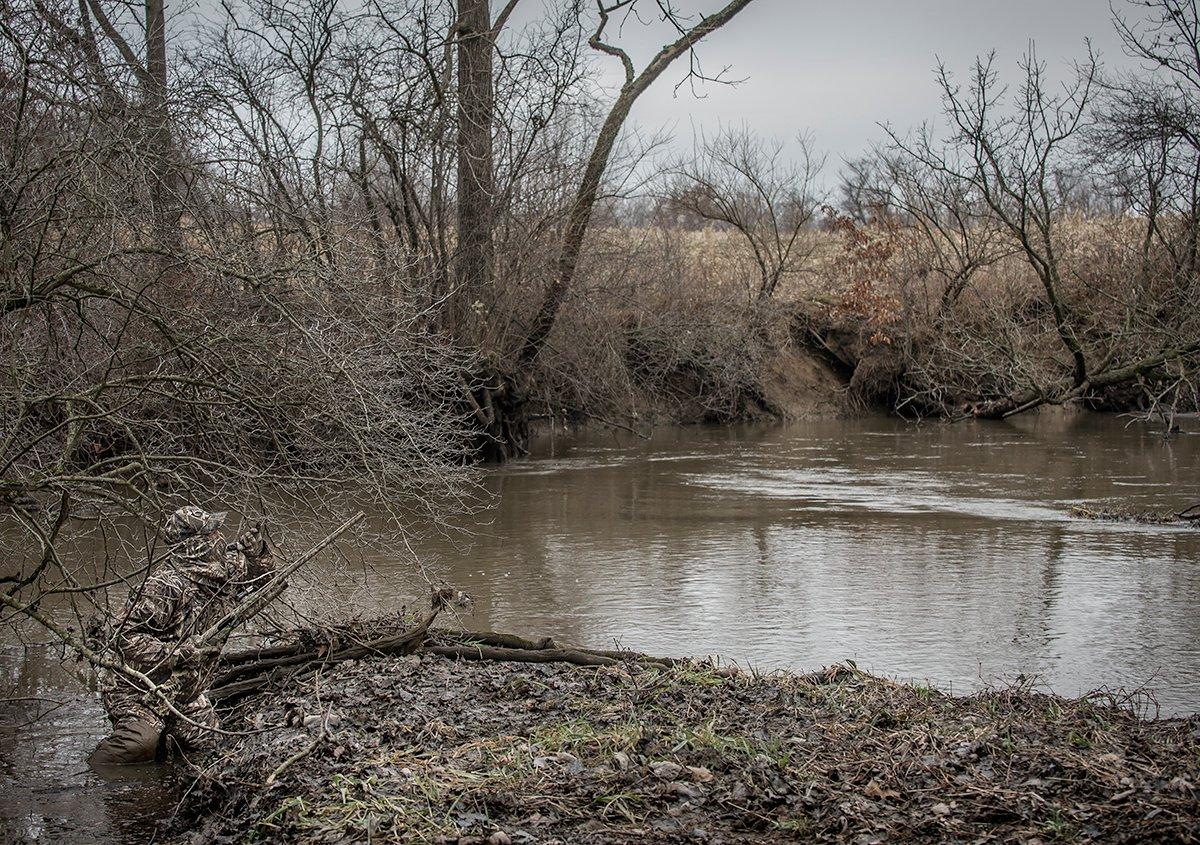Follow these easy steps to walk up more ducks and geese
Jump-shooting ducks and geese sometimes gets a bad rap, and that's unfortunate. Done well, jump-shooting is an ethical, effective and enjoyable form of hunting.
It's also pretty simple and straightforward. However, that doesn't mean you can just amble along a ditch bank, stream corridor or small river and expect birds to flush at your feet. Following basic guidelines will improve your jump-shooting endeavors this season.
Do: Let bank cover and the waterway's course work for you. Many creeks, streams and rivers, wind and bend along their paths, creating great cover and perfect ambush opportunities. Bank cover — trees and brush in woodland areas, or cattails and grass in meadow or prairie situations — also helps hide you.
Use every angle and bit of cover to your advantage. Hug the inside corners of hard turns, and be prepared to shoot when you pop into the open. Stay low, and let the stream bank and vegetative cover hide you. Peek over cover and hard turns to catch ducks loafing downstream.
Man-made ditches can be more difficult, as they're generally straight. However, ditch banks provide at least some vertical cover. Slip to a good vantage point, locate ducks, and then use the banks to approach them head-on.
Don't: Get in a hurry. It might seem boring to mince steps in time with the current or paddle your canoe like you're crossing the Delaware, but you'll score more birds that way. Ducks hear well, and any splashing, crunching or banging upstream will put them on alert, ruining your tactical advantage.
Do: Hunt the edges. Loafing, feeding or otherwise relaxed ducks typically congregate at the edges of waterways, near banks, cover, timber or vegetation. Often, they'll rest on logs or mud flats, or simply feed and hang out in small, tucked-away spots. Always look for motion or duck silhouettes along stream edges, in the shadows. Further, don't ignore small backwaters, bayous or flooded shoreline spots, which are perfect duck hideouts.
Don't: Neglect midday shoots. Why wake up early? Jump-shooting is tailor-made for a relaxed midday hunt. Birds will leave roosts and feed during early mornings, and then many find hidden loafing areas along creeks and rivers at midday. Let them settle in, and then surprise them there while the sun is high.
Do: Use a canoe or skiff, if possible. Walking can be very effective, but a canoe or other small watercraft lets you slip quickly along a waterway in almost complete silence. Better, you can do a two-man hunt with a buddy. One guy can paddle and steer while the other concentrates solely on spotting and shooting ducks. Take two trucks — one at the entry point, one at the exit — and make a day of it. It's amazing how effective and enjoyable a long, lazy float can be.
Don't: Jump-shoot a slough or pond where you could decoy more ducks. I see this in the Dakotas all the time: Hunters spot ducks on a slough, and then slip to the water's edge and shoot a few birds as the ducks flee. Had they simply flushed the ducks and set out a few decoys, they probably could have shot many more birds as the ducks returned.
Hunt how you want, of course, but I follow a simple rule. If a slough or pond holds a concentration of ducks that would allow a good decoy shoot — say 25 here in Wisconsin, or 75 or more in the Dakotas — I don't jump-shoot it and save it for a morning decoy outing. If, however, I'm a bird or two shy of a limit and see a few ducks (10 or fewer) on a small water, I figure it's fine to jump it, as I'm not wrecking a potentially good morning shoot.
Do: Get out and enjoy some jump-shooting this season. Hey, I'm a decoy guy. Nothing fires me up like setting out 100 blocks and watching ducks pour into a well-crafted spread. But I love a good jump-shoot, too, especially when stale birds or warm conditions create poor decoy hunting. Plus, traveling along a winding creek or stream takes me back to a simpler time and lets me experience areas I wouldn't see while hunting big water or the prairies. Any ducks I pick up along the way are a great bonus.
Click here for more Realtree waterfowl hunting content. And check us out on Facebook.







